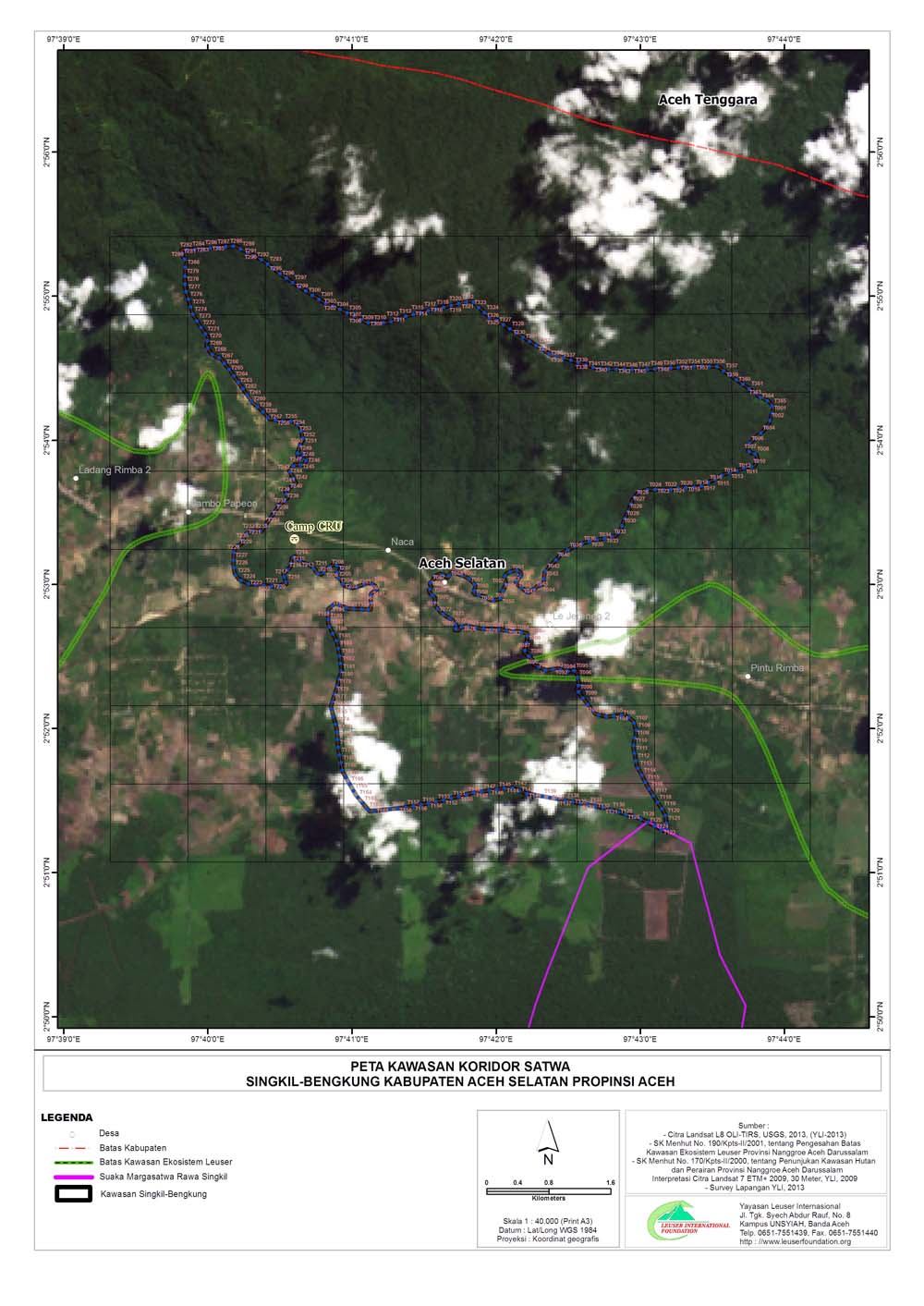- Protected status sought for artery between two major forest blocs
- Trumon corridor links orangutan stronghold to greater Leuser Ecosystem
- Human encroachment, oil-palm expansion threatens burgeoning reforestation initiative
An Indonesian organization dedicated to conserving one of the world’s richest expanses of tropical rainforest is pushing for the rezoning of a crucial wildlife corridor where human encroachment and the march of oil palm threaten dwindling elephant and tiger populations.
With support from the United States Agency for International Development (USAID), the Leuser International Foundation (YLI) has undertaken to reforest the ebbing Trumon Nature Corridor, and it also wants the Environment and Forestry Ministry to designate the area a protected forest.
Established in 1998 as a result of YLI lobbying, the Trumon corridor comprises a butterfly-shaped 2,700-hectares connecting the marshy Rawa Singkil Wildlife Reserve in the coastal south with the mountainous Bengkung Valley in the north. All three areas lie within the Leuser Ecosystem, the only place on earth where the Sumatran varieties of tiger, elephant, rhino and orangutan still coexist in the wild.

In the 1970s, the government constructed a road between the provinces of Aceh and North Sumatra which isolated Rawa Singkil, an enormous peat swamp home to the world’s densest population of Sumatran orangutans.
The Trumon corridor was an attempt to bridge the gap created by the road, but over the years encroachers have penetrated deeper and deeper into the area’s forests, squeezing wildlife and throwing megafauna into increasing conflict with local people who view them as pests.
Thanks to the efforts of the YLI and communities it partners with, some of the corridor’s forests have begun to recover, especially in the north near the Bengkung Valley. There, a young secondary forest has become home to 116 bird species, six types of primates, 13 mammal species and a variety of reptiles and amphibians, according to YLI staff. Even tiger tracks have been spotted.
The road still cuts through Trumon. Golden cats, clouded leopards and other creatures are sometimes hit by cars, especially at night.
“We’ve put up signs to alert motorists when crossing the corridor,” said Fakhrurradhi, a YLI staff.
While the forests near the valley are on the upswing, things aren’t as good farther south, where a number of transmigrant settlements have been established and oil palm plantations continue to expand.
The YLI’s conservation efforts include planting trees that animals and people can use, promoting ecotourism and setting up a patrol team manned by community members and four tame elephants.
“This is to help the people of Trumon who often come into conflict with elephants who come from Bengkung and enter their gardens,” said Rusdi, another YLI staff.


Staving off encroachers is the biggest challenge. The YLI hopes it can buy time for the forests to recover, seen as a boon for biodiversity and local livelihoods alike.
“People should be made aware that this corridor is not only important for Leuser’s forests – it also provides a variety of environmental services for the people here,” Rusdi said. “If people can understand that, the recovery of Leuser’s fragmented forests will become a reality.